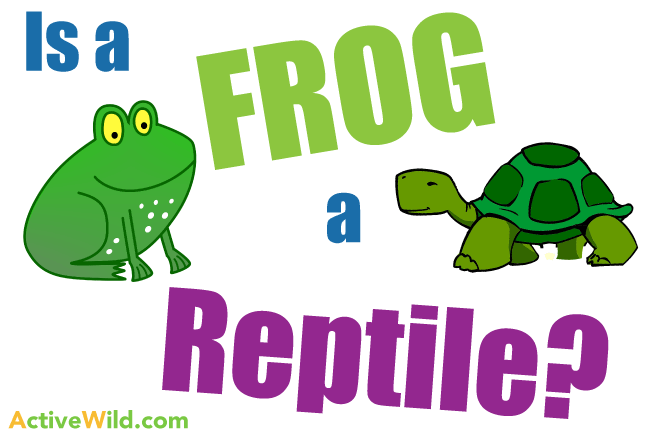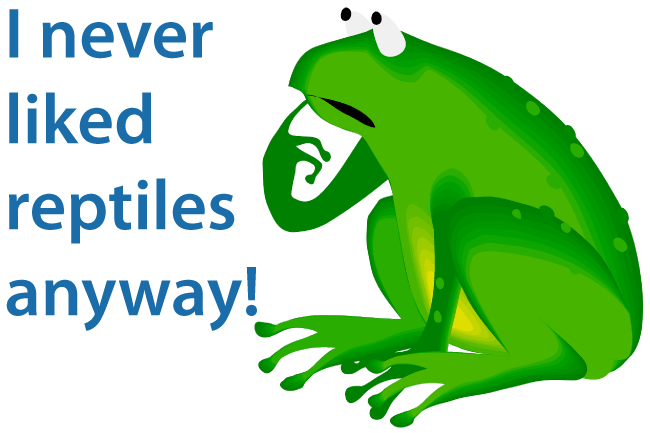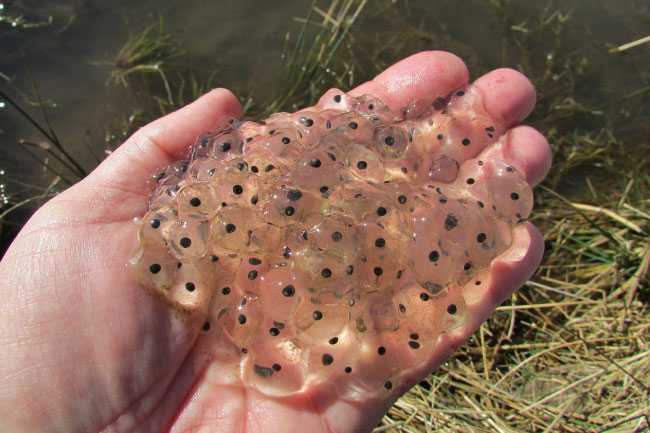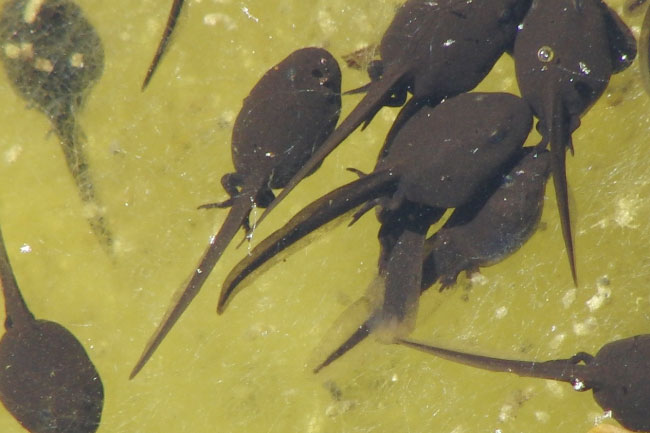Is a frog a reptile?
In a nutshell, no; a frog is not a reptile …
A frog is an amphibian!
Which is not the same thing at all!
In this article, we’ll expand on the ‘Is a frog a reptile’ question by explaining the differences between amphibians (like frogs) and reptiles.
So, if you just wanted a quick answer, there you have it: frogs aren’t reptiles. But please do read on: you’ll discover some incredible facts about the differences between amphibians and reptiles.
Is a frog a reptile?
There are lots of similarities between frogs and small reptiles like lizards and turtles. These similarities lead some people to think that they’re the same kind of animal.
For a start, frogs and reptiles are both animals! You may be surprised that I feel I need to tell you this, but I’m often asked things like ‘Are birds animals?’ (Click the link to find out my answer).
Frogs and reptiles are vertebrates (which is a scientific way of saying that they have backbones). Adult amphibians and all reptiles have four legs (or flippers).
Many frogs, and reptiles such as crocodiles, spend time both in and out of water.
Adult frogs and most reptiles are carnivorous – they eat other animals, rather than plants.
Neither frogs nor reptiles can change their own body temperature, and rely on outside elements to stay at the right temperature. This is known as being ‘cold-blooded’, or – if you want to sound clever – as ‘ectothermic’.
Small turtles and terrapins look quite similar to frogs: you sort of think that they could be related ...
… and amphibians such as newts and salamanders look very similar to reptiles like lizards.
However, there are several big differences between amphibians (such as frogs) and reptiles …
Is a Frog a Reptile: Amphibians Vs Reptiles
The main difference between amphibians and reptiles is how they grow up – beginning with their eggs.
The eggs of amphibians and reptiles are very different. Most amphibians need water to lay their eggs in. Their eggs are surrounded by a jelly-like substance. There is no barrier to completely shield the developing amphibian from its surroundings. Species such as these are known as anamniotes.
Reptiles, on the other hand, are amniotes. The embryos of amniotes are shielded from the outside world by membranes – tough, skin-like bags that protect the developing animal from the outside world.
Because they’re not restricted to having babies in water, amniotes can live in a wide range of habitats. This is how amniotes such as reptiles and mammals came to ‘conquer the land’, leaving amphibians, and other anamniotes such as fish, in the water!
The embryos of many reptiles – and other amniotes like birds – are protected by eggs with hardened outer shells. Even the embryos of amniotes such as humans, which develop inside the body, are surrounded by a tough membrane.
Metamorphosis
The bodies of (most) amphibians completely change during their lives. This process is called metamorphosis. They start off as larvae (usually in water) and end up with completely different bodies when they reach adulthood.
Frog larvae are called tadpoles. Tadpoles grow inside a jelly-like substance called frogspawn. As tadpoles, frogs have gills and can breathe underwater. At the beginning of their lives, they don’t have arms or legs, and they have tails for swimming.
Their bodies then start to change. They grow arms and legs. Their tails and gills disappear and they develop lungs. Eventually they turn into adult frogs, able to jump around on land and breathe air.
Just imagine if you could breathe underwater and swim like a fish, but that one day you started growing arms and legs and could walk about on land!
Reptiles’ bodies don’t undergo these changes. They're born as small versions of their adult selves, and just get bigger as they reach adulthood.
Or, in the case of saltwater crocodiles (the biggest living reptiles), much bigger!
Damp Skin
Amphibians need to keep their skins damp. This limits the habitats in which amphibians can live; they’ll dry out in hot, dry places.
A reptile’s scales enable it to retain moisture. This means that reptiles can live in a wider range of environments, including dry places like deserts.
Is a Frog a Reptile: Conclusion
Congratulations! Now if anyone asks you if a frog is a reptile, you’ll either be able to give them a quick answer: ‘NO!’, or a very detailed answer, involving eggs and metamorphosis. Why not rehearse your long answer now, just to make sure you’ve got your facts straight?
I hope you enjoyed reading this article. If you have any more animal questions, please feel free to ask me!
Professor Wild









